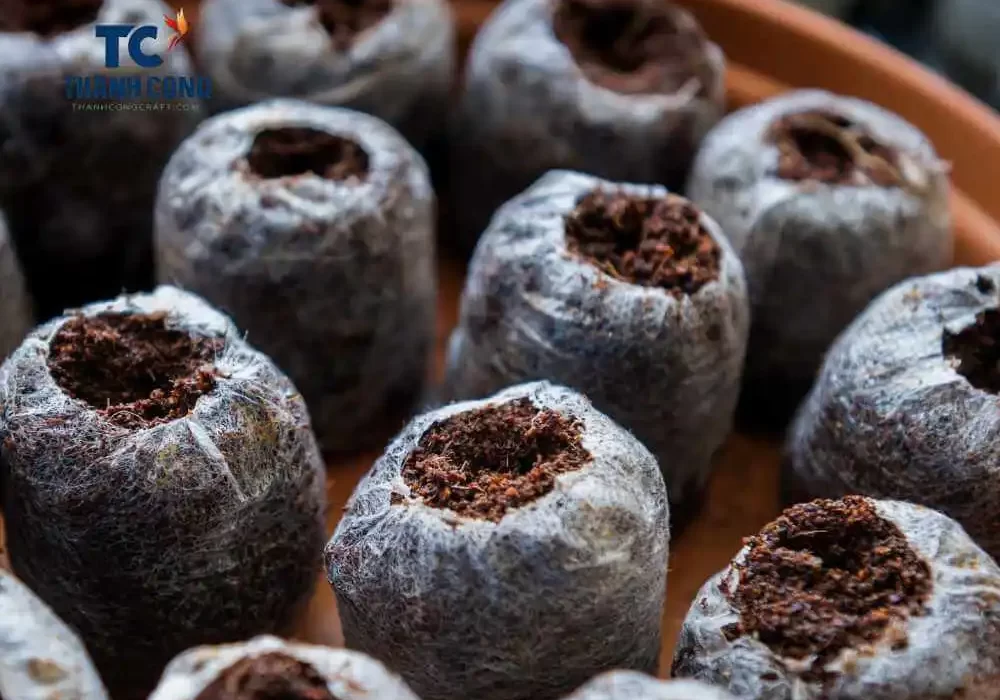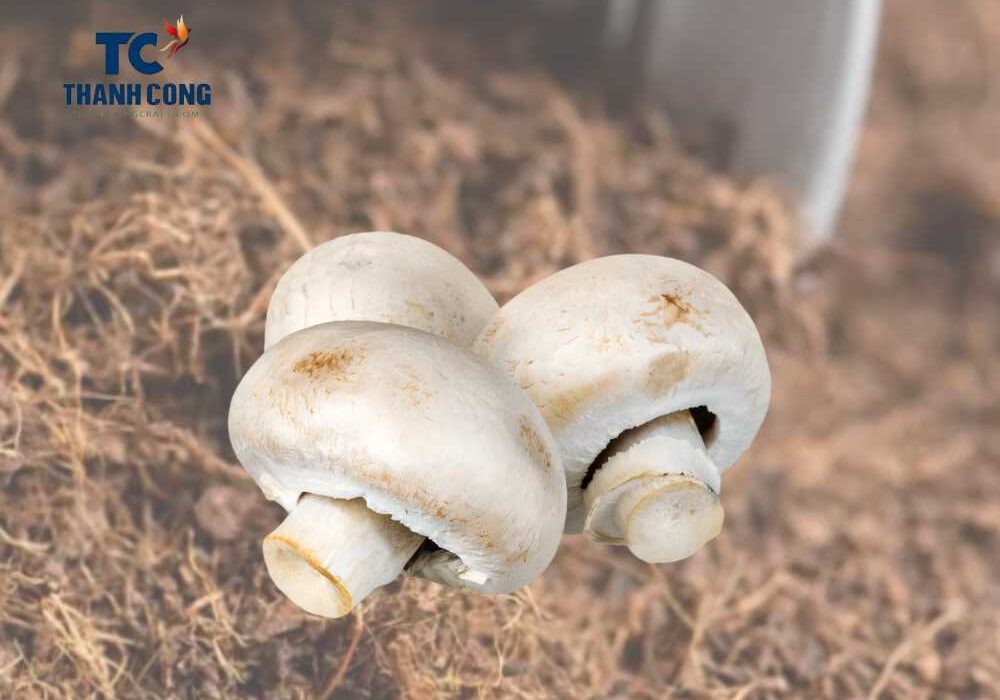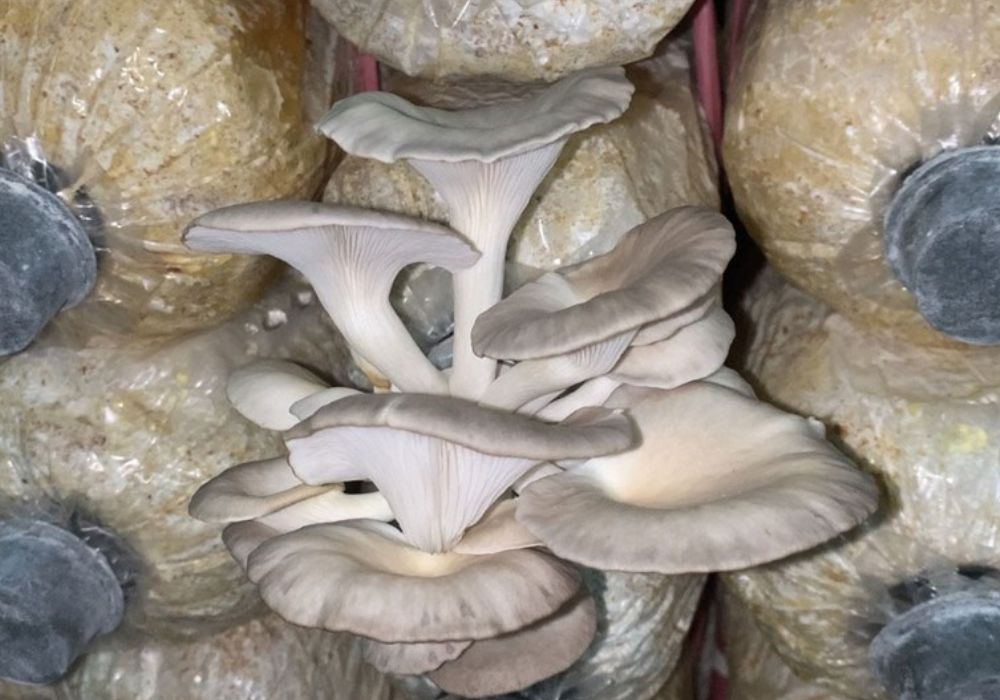When considering coir for your mushroom farm, it is important to consider its many advantages over other traditional growing method, such as peat moss. Coco (coconut) coir substrate is very forgiving as a medium, making it a great choice for novice mushroom growers. It holds more moisture and is more sustainable than peat moss. The following article will discuss the benefits and how to prepare the coco coir mushroom substrate.
Contents [hide]
Properties and Benefits of Coco Coir Substrate for Mushroom
Coco coir, derived from the fibrous husk of coconuts, offers numerous properties and benefits that make it an excellent substrate for various applications, including mushroom cultivation. Here are some key properties and benefits of coco coir:
High Water Retention
Coco coir has exceptional water retention capabilities, allowing it to hold moisture efficiently. It can absorb and retain up to 10 times its weight in water. This property is crucial for mushroom cultivation, as mushrooms require a consistently moist environment for optimal growth. The water retention ability of coco coir helps maintain the necessary moisture levels, reducing the risk of the substrate drying out and providing a favourable environment for mycelium development.

Excellent Drainage
While coco coir retains water well, it also exhibits excellent drainage properties. It allows excess water to drain away, preventing waterlogging and excessive moisture accumulation in the substrate. Adequate drainage is vital to prevent the growth of harmful microorganisms and maintain a healthy, oxygen-rich environment for mushroom mycelium. The balanced drainage of coco coir helps mitigate the risk of contamination and fungal growth.
Balanced pH Levels
Coco coir tends to have a neutral to slightly acidic pH range, making it compatible with various mushroom species. However, it can be easily adjusted to meet the specific pH requirements of different mushrooms by incorporating additives like agricultural lime or gypsum.
Maintaining the proper pH range is essential for the growth and development of mushrooms, as it influences nutrient availability and enzymatic activity. Coco coir’s adaptability to pH adjustment makes it a versatile substrate for various mushroom species. (See more: Coconut husk for plants)
Minimal Nutrient Content
Coco coir has a relatively low nutrient content, which is ideal for mushroom cultivation. Mushrooms are primarily decomposers and obtain their nutrients from the substrate rather than relying on nutrient-rich soils.
The low nutrient levels in coco coir provide a neutral starting point that gives cultivators precise control over nutrient supplementation. This control enables the customization of nutrient levels based on the specific needs of different mushroom species, promoting healthy growth and development.
High Sterility Potential
Coco coir possesses inherent sterility, meaning it has a lower risk of contamination than other organic substrates. The production process involved in manufacturing coco coir, such as washing and buffering, contributes to its cleanliness. This sterility potential minimizes the competition from unwanted organisms, providing a favourable environment for mycelium colonization and mushroom fruiting.
However, it is still essential to follow proper sterilization or pasteurization techniques to ensure optimal conditions for mushroom cultivation.

Environmentally Friendly and Sustainable
Coco coir mulch is an environmentally friendly and sustainable substrate option. It is a renewable resource obtained from the discarded husks of coconuts, using a byproduct from the coconut industry.
By choosing coco coir, growers reduce their environmental impact compared to substrates that rely on peat moss or other non-renewable resources. It is biodegradable and can be composted after use, contributing to sustainable waste management practices.
Versatility and Availability
Coco coir is available in various forms, such as blocks, fibres, or coco peat, offering flexibility in its usage. It can be easily sourced from garden centres, agricultural suppliers, or online retailers. Its versatility makes it suitable for various mushroom species and cultivation methods, including indoor and outdoor setups. The availability and affordability of coco coir make it a popular choice among mushroom cultivators worldwide.
In conclusion, the properties and benefits of coco coir, including its high water retention, excellent drainage, balanced pH levels, minimal nutrient content, high sterility potential, environmental friendliness, and versatility, make it an attractive substrate option for mushroom cultivation.

Prepare the Coco Coir Mushroom Substrate
Preparation and pasteurization of coco coir are crucial to ensure a clean and suitable substrate for mushroom cultivation. Here’s a detailed guide on how to prepare and pasteurize coco coir:
1. Hydration
- If using coco coir blocks, break them apart into smaller pieces. If using coco coir fibres or coco peat, ensure they are already hydrated.
- Place the coco coir in a large container or bucket.
- Add hot water to the container to fully submerge the coco coir.
- Allow the coco coir to absorb the water and expand. This process usually takes a few hours. Use a fork or your hands to break up any clumps and ensure even hydration.
2. Draining
- Once the coco coir is fully hydrated, allow excess water to drain. Use a colander or strainer to separate the coco coir from the water.
- Squeeze out any excess moisture from the coco coir, ensuring it is moist but not dripping wet.
3. Fluffing and Mixing
- Fluff the hydrated coco coir with your hands or a fork to create a loose and airy texture.
- Break up any remaining clumps to achieve uniformity in moisture distribution.
4. Pasteurization
- Transfer the fluffed coco coir to a large container or pasteurization vessel.
- Preheat an oven or a pasteurization chamber to a temperature range of 140-160°F (60-71°C). Ensure the temperature is consistent throughout the process.
- Place the container with the coco coir inside the preheated oven or pasteurization chamber.
- Keep the coco coir at the pasteurization temperature for approximately 60-90 minutes. Pasteurization kills off potential contaminants while preserving beneficial microorganisms.
- Stir the coco coir occasionally during pasteurization to ensure even heat distribution.
5. Cooling
- After the pasteurization process, remove the container from the oven or pasteurization chamber.
- Allow the coco coir to cool down to room temperature before proceeding to the next steps.
Note: Pasteurization reduces but does not eliminate all contaminants. Maintaining a clean and sterile working environment throughout the process is essential.
Once the coco coir is prepared and pasteurized, it is ready to be mixed with mushroom spawn and placed into containers for incubation and fruiting. Following specific guidelines and requirements for the mushroom species you are cultivating is important to ensure optimal growth and yield.
Mushroom Substrate Coco Coir Vermiculite Recipe
Here’s a basic recipe for a coco coir and vermiculite substrate mix: a commonly used ratio is a 5:1 or 4:1 ratio of coco coir to vermiculite. The coco coir and vermiculite substrate ratio can vary depending on the mushroom species, desired moisture retention, and aeration levels.
To achieve the desired ratio, you can measure the volume or weight of the coco coir and vermiculite to ensure the correct proportions.
It’s important to note that the ratio can be adjusted based on your mushroom species’ specific needs and growing conditions. Some mushrooms may require a higher vermiculite content for increased moisture retention, while others may require more coco coir for better aeration. Experimentation and observation will help you determine the optimal ratio for successful mushroom cultivation.
Coconut coir mushroom substrate has many properties and uses that make it more popular. To grow mushrooms with coir safely and effectively, you must first have a pasteurized coir medium. However, coir is naturally resistant to bacteria. But this is still an organic substance that contains many potential diseases for plants and fungi.
If you have any further questions, don’t hesitate to send thanhcongcraft an email us at info@thanhcongcraft.com or message us at WhatsApp: +84967485411. Hope to serve you soon! Best regard!


